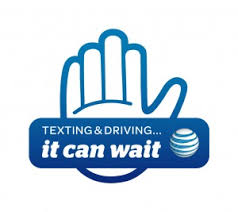Texting and Driving
Written by Mary Bratcher, The Motherhood Center
The subject of texting and driving has been in the forefront of news and conversation for months. One of the most controversial topics is the possibility of banning cell phone use totally for drivers in a vehicle. Why is it that we find it so difficult to do the right thing? Why is it that even though we know something is unsafe, we can not pull away, it must be taken from us. Why do we willfully endanger ourselves, our family, our friends, our property and all that is precious to others as well?

Most states in the U.S. have passed laws that ban texting or complete cell phone use while driving. And for good reason, as these numbers indicate:
- Cell phone use while driving increases reaction time by the same amount as having a blood-alcohol concentration of .08 percent, according to University of Utah researchers.
- Nearly nine out of 10 Americans think texting while driving should be outlawed. But two-thirds of adults admit that they’ve done it, according to a Harris Interactive survey.
- Text messaging results in the driver’s eyes being off the road for 4.6 of every 6 seconds. That’s as much time as it takes to travel the length of a football field at 55 miles per hour (MPH), according to the Virginia Tech Transportation Institute.
Textecution ($29.99 one-time charge)
This Android app cuts off texting ability if the device is moving faster than 10 MPH. If a passenger is using the device, he or she may request an override. That request must be allowed by a Textecution “administrator,” such as a parent or employer (notified by text that the request is pending). If the user tries to remove Textecution, the administrator also gets a heads-up.
tXtBlocker ($6.99 monthly for a single user)
Compatible with a wide range of smartphones, this app allows users to customize the locations and times of day—such as routine commuting or driving times—when texts and phone calls aren’t accepted.
AT&T DriveMode (Free)
Available for Android and BlackBerry, this app automatically sends a customized reply to incoming texts, just like an “out-of-office” autoreply. It also disables all ingoing and outgoing calls and Web browsing. Users manually enable the app before driving, though, so participation is strictly voluntary.
DriveSafe.ly ($3.99/month or $13.95/year for a single user)
Instead of shutting down communications entirely, this app reads text messages and emails out loud in real time, including shortcuts like LOL, and sends an autoresponse. You can even pick whether to have texts read to you with a male or female voice, or based upon the gender of the text sender.



